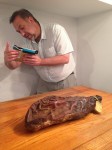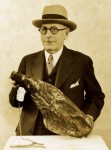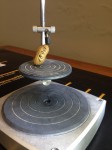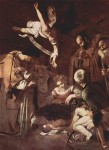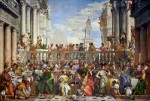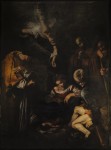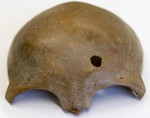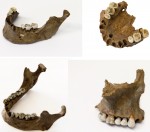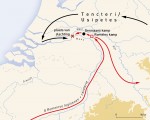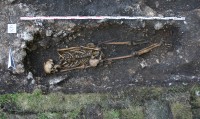 Archeologists from the Austrian Archaeological Institute (OAI) have discovered a rare foot and lower leg prosthesis dating to the 6th century A.D. at the archaeological site of Hemmaberg, near the village of Globasnitz, Carinthia, southern Austria. Several churches were built on the hill in the late Roman, early medieval period and was a popular center of pilgrimage. There are several burial grounds associated with the site, one of which is a small cemetery of 29 graves from the Frankish period between 536 and around 600 A.D. It was in this cemetery that the skeletal remains of an adult male between the age of 35 and 50 with a missing lower left leg was discovered in 2009.
Archeologists from the Austrian Archaeological Institute (OAI) have discovered a rare foot and lower leg prosthesis dating to the 6th century A.D. at the archaeological site of Hemmaberg, near the village of Globasnitz, Carinthia, southern Austria. Several churches were built on the hill in the late Roman, early medieval period and was a popular center of pilgrimage. There are several burial grounds associated with the site, one of which is a small cemetery of 29 graves from the Frankish period between 536 and around 600 A.D. It was in this cemetery that the skeletal remains of an adult male between the age of 35 and 50 with a missing lower left leg was discovered in 2009.
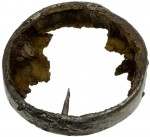 He was buried with a scramasax and a pennanular brooch in a grave next to the northern wall of the church. The skeleton is in excellent condition, intact except for the missing left foot and bottom of the left tibia and fibula. Where the missing bones would have been archaeologists found a circular iron band just under three inches in diameter. Two small iron rivets closed the band and decayed remains of wooden slats inside the ring were fixed to the ring with four iron nails. The shortened ends of the left tibia and fibia have dark stains that may be all that’s left of whatever organic material, probably wood or leather, that connected the prosthesis to the leg. The wood remnants and the position of the band in the grave indicate the device may have been a wooden leg with the iron band on the bottom.
He was buried with a scramasax and a pennanular brooch in a grave next to the northern wall of the church. The skeleton is in excellent condition, intact except for the missing left foot and bottom of the left tibia and fibula. Where the missing bones would have been archaeologists found a circular iron band just under three inches in diameter. Two small iron rivets closed the band and decayed remains of wooden slats inside the ring were fixed to the ring with four iron nails. The shortened ends of the left tibia and fibia have dark stains that may be all that’s left of whatever organic material, probably wood or leather, that connected the prosthesis to the leg. The wood remnants and the position of the band in the grave indicate the device may have been a wooden leg with the iron band on the bottom.
Osteological investigation revealed the man had major dental health issues, with cavities throughout his mouth, and he sustained a broken nose that healed before his death. Evidence of arthritis was found throughout this body, but particularly in his shoulders, hips, left knee and wrist, and spine. He also had rotator cuff disease in his left shoulder. The left foot and the ends of the left tibia and fibula were missing entirely, providing clear evidence of amputation, and small circular holes are likely an indication of infection of the remaining lower leg bones.
To try to determine how long the man survived following the amputation, Binder and her colleagues turned to the X-rays, as cut marks on bone can disappear as soon as two weeks after an amputation procedure. The X-rays showed significant changes in the bone density of the femur, tibia, and fibula on the left side of the body as compared to the non-amputated right side. But osteoarthritis in the left knee suggests the man was indeed still using his left leg following the amputation, with the assistance of a prosthesis.
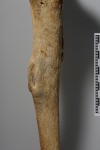 Because he was buried near the church — of the 29 burials, his was the closest to the church wall — he must have been a high status individual. That status is confirmed by the grave goods, which while not uncommon in Germanic burials from late antiquity, are unique among the Hemmaberg burials. His right and left hip joints show tell-tale signs of regular horseback riding. The muscle attachment sites of hip and knee and the osteoarthritis of the spine also indicate the man spent a lot of time riding horses. He also has a healed injury on his right tibia — a huge hematoma — that was likely caused by blunt trauma. Wounds of this kind are commonly found when men on horseback are attacked by men on foot.
Because he was buried near the church — of the 29 burials, his was the closest to the church wall — he must have been a high status individual. That status is confirmed by the grave goods, which while not uncommon in Germanic burials from late antiquity, are unique among the Hemmaberg burials. His right and left hip joints show tell-tale signs of regular horseback riding. The muscle attachment sites of hip and knee and the osteoarthritis of the spine also indicate the man spent a lot of time riding horses. He also has a healed injury on his right tibia — a huge hematoma — that was likely caused by blunt trauma. Wounds of this kind are commonly found when men on horseback are attacked by men on foot.
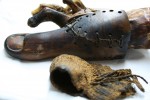 The oldest known surviving example of a prosthetic device is a wood and leather big toe replacement found in Thebes on the mummy of Tabaketenmut It dates to around 1065–710 B.C. and shows signs of wear so we know Tabaketenmut walked on it in life; it wasn’t added by the embalmers after death.
The oldest known surviving example of a prosthetic device is a wood and leather big toe replacement found in Thebes on the mummy of Tabaketenmut It dates to around 1065–710 B.C. and shows signs of wear so we know Tabaketenmut walked on it in life; it wasn’t added by the embalmers after death.
There’s textual evidence of prosthetics in antiquity. Herodotus (484–425 B.C.) tells the story in Book Nine of the Histories of Hegesistratus who cuts off half his foot to escape imprisonment and fashions “a foot of wood” to wear after he heals. Legendary or not (probably the former), the story indicates prosthetics were known in 5th century Greece. Pliny’s Natural History (Book 7, Chapter 29) recounts the exploits of 3rd century B.C. Roman general Marcus Sergius, hero of the Second Punic War, who fought through a great many grievous wounds, including the loss of his right hand which deterred him not one bit. “He had a right hand made of iron, and attached to the stump, after which he fought a battle, and raised the siege of Cremona, defended Placentia, and took twelve of the enemy’s camps in Gaul.”
Archaeological evidence from classical antiquity, however, is very thin on the ground. In the 19th century, a prosthetic lower leg made of a wooden core covered in sheets of bronze was unearthed from a Roman burial in Capua dating to around 300 B.C. Unfortunately it no longer exists — it was bought by the Royal College of Surgeons in London and destroyed in the Blitz in 1941 — and any human remains found with it were not recorded so there’s no evidence of wear on the leg or stress on the bones that can confirm it was a functional prosthetic limb rather than a post-mortem addition for aesthetic purposes.
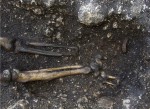 Only three other archaeological prosthetics are known until the 16th century: a leather and wood foot found in a 5-7th century A.D. burial in Switzerland (probably not used in life), a bronze foot found in a 7th-8th century burial in Germany of limited use at best, and the iron and wood prosthetic from the 6th century found in Hemmaberg. That’s why it’s such a significant find, because surviving ancient prosthetic are so rare and skeletal remains that can tell us something about how the person who wore the device and how it was used are rarer still.
Only three other archaeological prosthetics are known until the 16th century: a leather and wood foot found in a 5-7th century A.D. burial in Switzerland (probably not used in life), a bronze foot found in a 7th-8th century burial in Germany of limited use at best, and the iron and wood prosthetic from the 6th century found in Hemmaberg. That’s why it’s such a significant find, because surviving ancient prosthetic are so rare and skeletal remains that can tell us something about how the person who wore the device and how it was used are rarer still.
